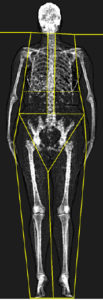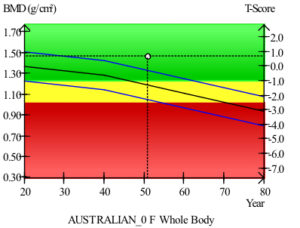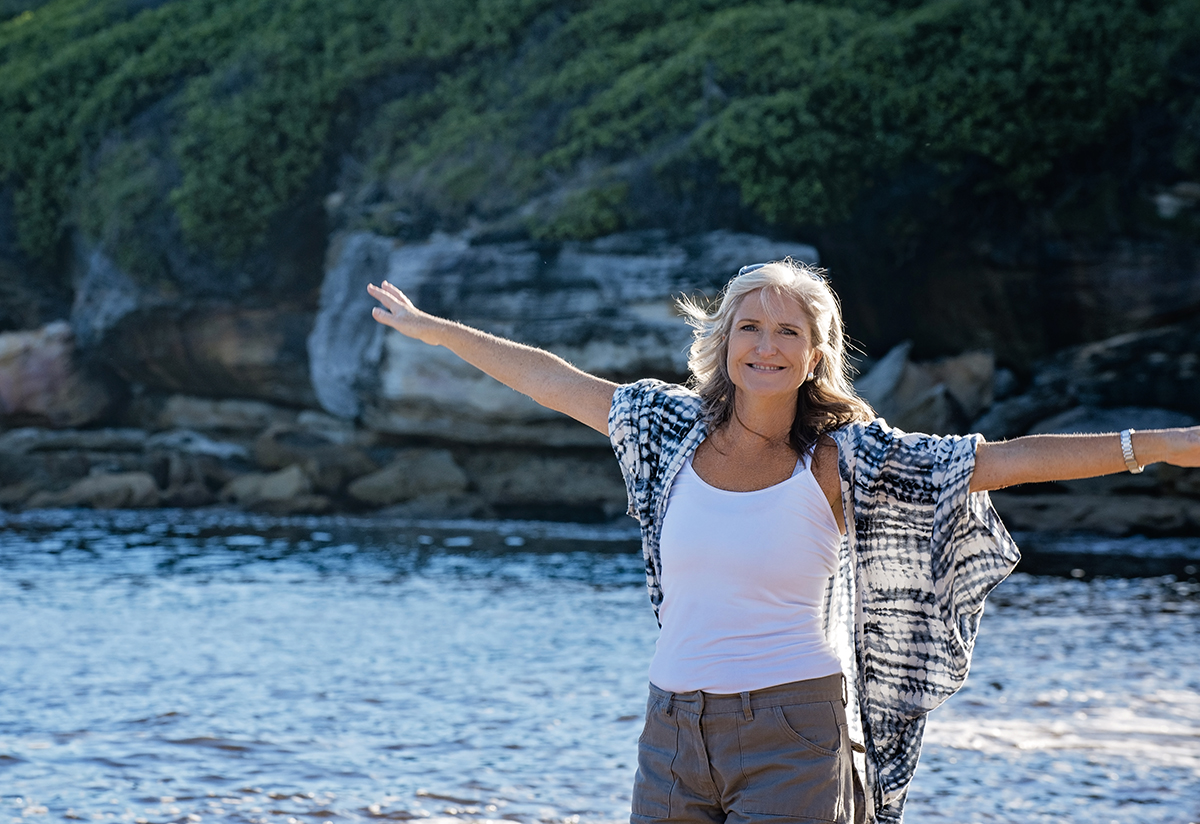Bone Density…what is it and why you should know about it
I recently had a dual-energy X-ray absorptiometry or more commonly known as DEXA scan to check my fat percentage, lean muscle mass and my bone density. As a woman reaching menopausal age, I was interested to know how I was fairing with my bone density, and whether I should be taking a more targeted preventative approach towards osteoporosis.
Did you know, 1 in 2 woman and 1 in 3 men over the age of 65 will develop an osteoporotic fracture in Australia, therefore affecting around 2 million people nationwide.
Poor bone health can lead to osteoporosis which increases your risk of bone fractures and collapsed spinal bones which puts added pressure on nerves leading to pain.
Bone density is a measure of you’re bone strength, where minerals fill the bone matrix, making it dense, and therefore stronger. Generally your peak bone mass is achieved by the age of 30, and then gradually begins to decline. But if you are a woman, this decline accelerates after menopause, hence why more woman than men suffers from osteoporosis.
This is why it is important that children and teenagers are eating a good diet and getting enough calcium and vitamin D, to maximize their bone mass, so that by the age of 30, they are in a better starting position before bone loss begins.
Along with calcium and vitamin D, exercise is considered the most important factor in building bone growth in adolescence, with weight bearing exercise preferred as it builds on muscle strength and bone strength. When muscles work, they pull on your bones which stimulates them, and in turn encourages them to grow denser. But even if you are already in your adult years or past menopause it’s never top late to improve your bone density, or at least maintain it. Seek out a personal trainer if you are unsure of what kind of weight bearing exercise you should be doing.
Preferably you should be eating a diet that has sufficient calcium and vitamin D, but also vitamin K, omega 3 fatty acids and adequate protein are also important for bone health, as are the minerals magnesium and potassium which play a supporting role. This is why nutritionists and naturopaths are always harping on about eating a diet that is varied, rich in fruits and vegetables, especially green leafy vegetables, to help ensure that you are getting all these different vitamins and minerals that you need. And while you can purchase supplements to help with meet this demand, it is always preferable if you can get these from your diet first. Refer to the table below for good food sources:
| Calcium | Yogurt and other dairy products, tahini, cheese, tinned salmon (eat the small bones) tofu, legumes and dark green leafy vegetables, fennel |
| Vitamin D | Mackerel, herring, wild caught salmon, tinned salmon and sardines (eat the small bones), eggs, butter, cod liver oil |
| Vitamin K | Brussel Sprouts, cauliflower, kale, broccoli, liver, spinach, green beans, soybeans, fermented vegetables |
| Omega 3 | Oily fish such as mackerel, wild caught salmon, herring, tuna, Sydney Rock oyster, Rainbow Trout, Whiting, flaxseed oil, hempseed oil, soybeans, walnuts |
| Magnesium | Dark green leafy vegetables, whole grains, almonds, cashews and legumes, fennel |
| Potassium | Dark green leafy vegetables, spinach, celery, Cos lettuce, avocado, bananas |
| Protein | From both animal and plant sources: Beef, poultry, eggs, sardines and anchovies, nuts and seeds, and many vegetables contain small amounts of protein. |
Alternatively, some of the risk factors associated with osteoporosis are smoking, excessive alcohol consumption, a sedentary lifestyle, use of glucocorticoids steroids or anticonvulsants, a family history of osteoporosis, early menopause, testosterone deficiency in men, an inadequate diet or low BMI (body mass index).
So really, good bone health should be important in which ever stage of life you at, whether supporting your child’s health or your own, ensuring you have good strong bones to last you a lifetime.
So if you are concerned about your bone health or have any of the risk factors mention above, or just want to take some preventative measures, make an appointment (here) and we can discuss your personal plan.
By the way, I am happy to report that I have the bone health of a 20-30 year old. All my activities as a child and teenager (ballet, hockey, athletics, basketball, swimming and snow skiing…my parents did a lot of running around), those years of exercise and a balanced diet have paid off.
Now in my 50’s I’m working on maintaining my bone health with a balanced diet, walking my dog daily, cycling, resistance training with friends and yoga. I’m planning on staying in the green, as tall as I can as long as I can, without fractures and pain free.
Lisa xx




